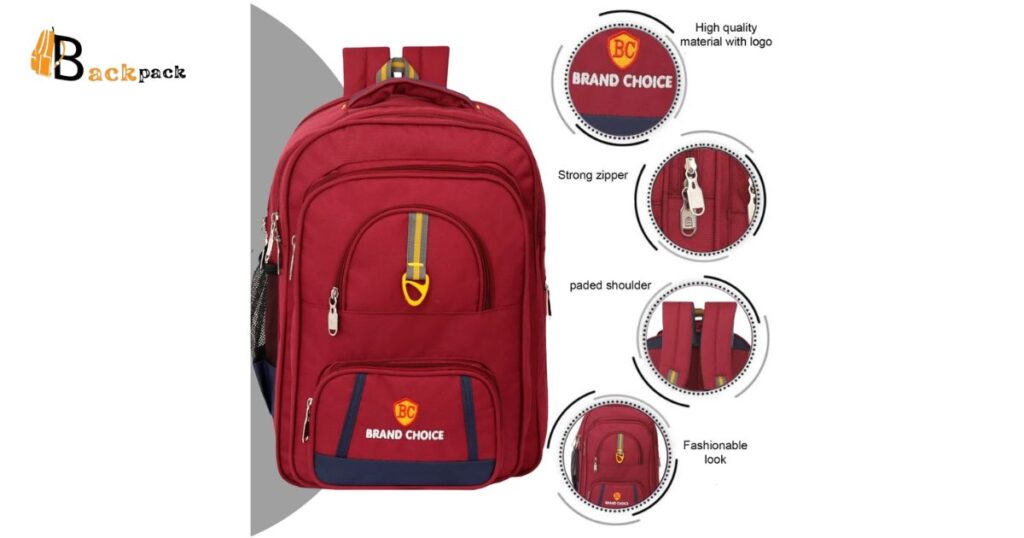School Backpack Capacity refers to the maximum volume or space a backpack can hold comfortably while maintaining proper weight distribution. It is crucial to consider the capacity when selecting a backpack for students as overloading it can lead to discomfort strain and potential health issues.
You aware of the crucial guidelines for selecting the right school backpack. So fined the essential information you need to know about School Backpack Capacity Guidelines for Kids of All Ages. Whether you are a parent educator or student understanding these guidelines is vital for ensuring comfort safety and well being throughout the school year. Act now to provide yourself with the required information.
Need to Know: School Backpack Capacity Guidelines for Kids of All Ages provides essential recommendations for selecting the right backpack size for children. These guidelines ensure that backpacks are not overloaded preventing discomfort and potential health issues. By following these age appropriate capacity guidelines parents and caregivers can prioritize their kids comfort and well being throughout the school year.
| Age Group | Recommended Backpack Capacity |
| Preschoolers | Up to 5% of body weight |
| Elementary | 10-15% of body weight |
| Middle School | 10-15% of body weight |
| High School | 10-15% of body weight |
These guidelines help ensure that children of all ages carry a suitable backpack load, minimizing strain and promoting comfort during their daily activities.
Introducing school backpack capacity guidelines

Introducing school backpack capacity guidelines marks a significant step toward promoting the well being of students. These guidelines provide clear recommendations on how much weight a backpack should carry ensuring childrens comfort and safety.
By adhering to these guidelines parents educators and students can mitigate the risk of musculoskeletal issues and discomfort caused by overloaded backpacks.
Implementing these guidelines fosters a supportive environment for students to thrive academically and physically. It is a proactive approach that prioritizes the health and happiness of our children as they navigate their educational journey.
Overview of school backpack capacity guidelines for children of all ages

An overview of school backpack capacity guidelines for children of all ages is essential for parents educators and students alike. These guidelines outline the recommended weight limits based on age and ensure that backpacks are not overloaded preventing discomfort and potential health issues.
From preschoolers to high school students understanding these guidelines helps maintain proper posture and promotes overall well being. By adhering to these recommendations parents can make informed decisions when selecting backpacks, prioritizing their child’s comfort and health throughout the school year.
Factors to consider when selecting the right school backpack size and weight

When choosing the perfect school backpack it is essential to consider various factors to ensure comfort and safety. First focus on the size and weight of the backpack keeping in mind the child’s age body size and recommended guidelines. Opt for adjustable straps and padded back panels to distribute weight evenly and reduce strain on the shoulders and back.
Consider the number of compartments and organization features to keep belongings tidy and prevent overloading. By carefully evaluating these factors you can select a school backpack that promotes proper posture and supports your childrens well being throughout the school day.
Material and Durability

When considering the material and durability of school backpacks. It is essential to prioritize longevity and resilience. Opting for sturdy materials like nylon or polyester ensures the backpack can withstand daily wear and tear. Reinforced stitching and quality zippers enhance durability. Preventing potential tears and breakages.
A durable backpack not only withstands the rigors of daily use but also provides long term value for students and parents alike. By investing in a backpack with superior material and durability students can confidently carry their essentials throughout the school year without worrying about premature wear or damage.
Tips for Proper Backpack Use
| Tips for Proper Backpack Use |
| 1. Use both shoulder straps to distribute weight evenly. |
| 2. Adjust straps for a snug fit, with the bottom near waist. |
| 3. Pack heavier items closer to the back for balance. |
| 4. Perform regular checks to eliminate unnecessary items. |
| 5. Encourage proper lifting techniques to avoid strain. |
Implementing these tips ensures students maintain proper posture and prevent discomfort while carrying their backpacks.
Match the backpack to the child

When selecting a backpack for your child including a Clear Backpack. It is crucial to match the backpack to the child’s size and needs. A backpack that is too large or too small can cause discomfort and strain on the children’s body. Ensure the backpack fits snugly against the child’s back and rests comfortably on their shoulders.
Consider adjustable straps and cushioned back panels for added comfort and support. By matching the backpack to the child, you can help promote proper posture and prevent potential health issues associated with carrying heavy loads.
Recommendations of school backpacks that meet capacity guidelines at different stages in a child’s schooling journey

Choosing the right school backpack that meets capacity guidelines is crucial for every stage of a child’s schooling journey. For preschoolers lightweight and compact backpacks with ample compartments are recommended allowing them to carry essentials without strain.
Elementary school students benefit from sturdy backpacks with adjustable straps to accommodate growing bodies and increasing workload. As children transition to middle school backpacks with reinforced stitching and ergonomic designs become essential to support heavier loads and longer school days.
High schoolers require durable backpacks with multiple compartments to organize textbooks laptops and sports gear ensuring they can comfortably navigate their busy schedules. By selecting backpacks that align with capacity guidelines at each stage parents can prioritize their child’s comfort and well being throughout their schooling journey.
Frequently Asked Question
What are school backpack capacity guidelines based on?
Capacity guidelines are based on a percentage of the child’s body weight typically ranging from 10-15%.
Are there different capacity guidelines for various age groups?
Yes capacity guidelines vary depending on the child’s age and developmental stage.
Why are school backpack capacity guidelines important?
Following capacity guidelines helps prevent musculoskeletal strain, posture problems and discomfort caused by overloading backpacks.
How do I determine the ideal backpack weight for my child?
Multiply your child’s weight by the recommended percentage (10-15%) to find the ideal backpack weight.
Can exceeding capacity guidelines cause health issues?
Yes overloading backpacks beyond capacity guidelines can lead to back pain shoulder strain and posture related problems in children of all ages.
Final Thought
Understanding and implementing school backpack capacity guidelines for children of all ages is crucial for ensuring their well-being and comfort during their academic years. These guidelines typically ranging from 10-15% of the child’s body weight serve as a crucial parameter for selecting the right backpack size. From preschoolers to high schoolers adhering to these recommendations helps prevent musculoskeletal strain posture problems and discomfort caused by overloading backpacks.
By following age appropriate capacity guidelines parents and caregivers can make informed decisions about backpack selection considering factors such as weight size and ergonomic design. Preschoolers benefit from lightweight compact backpacks with ample compartments while older students may require more robust designs to accommodate heavier loads and longer school days.
Exceeding capacity guidelines can lead to back pain shoulder strain and posture-related issues highlighting the importance of selecting appropriately sized backpacks. Investing in quality backpacks that align with capacity guidelines ensures that children can carry their essentials comfortably promoting a healthy approach to backpack use from an early age.
In summary prioritizing school backpack capacity guidelines is a proactive step toward safeguarding childrens physical health and well being throughout their educational journey. By incorporating these guidelines into backpack selection parents and educators can create a supportive environment that fosters comfort mobility and overall wellness for children of all ages.











